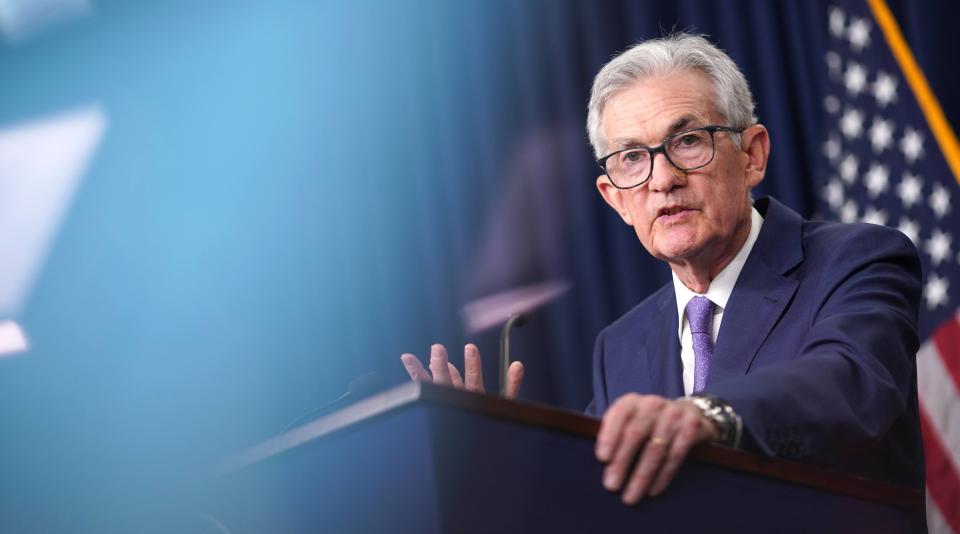Don’t expect Powell to promise a 50bp cut in his Jackson Hole speech: Natixis

Powell is due to speak on Friday, 10pm Singapore time, at the Federal Reserve Bank of Kansas City’s Jackson Hole symposium.
Don’t expect US Federal Reserve Chairman Jerome Powell to promise a 50 basis point (bp) cut in his speech at the Federal Reserve Bank of Kansas City’s Jackson Hole symposium this Friday.
Instead, investors should expect Powell to talk about the “shifting balance of risks” while giving a “tacit nod” to the commencement of the easing cycle come September, says Jack Janasiewicz, portfolio manager and lead portfolio strategist at Natixis Investment Managers Solutions. “Also, expect him to continue to lean on data dependency, giving the Fed further optionality to move more aggressively should the data begin to weaken at a faster pace.”
Powell is due to speak on Friday at 10am (Eastern Standard Time), or 10pm Singapore time. This year’s symposium is titled “Reassessing the Effectiveness and Transmission of Monetary Policy”.
In an Aug 21 note, Janasiewicz expects Powell’s speech to “lean dovish”. “Simply put, inflation continues to trend towards the 2% target seemingly at a rate exceeding consensus. Combine this with signs that the labour market is softening and one gets the sense that there is little need to retain a hawkish stance.”
Investors should expect Powell to continue echoing what he has said during press conferences around previous policy decisions, namely, “data dependency” and “greater confidence”, Janasiewicz adds.
“While most pundits have begun to argue that the Fed is already restrictive, given that inflation has come down while rates have remained pinned, expect a measured approach to the easing cycle,” writes Janasiewicz. “This likely means a series of 25bp rate cuts at each meeting or perhaps every other meeting.”
The data will guide the cadence, says Janasiewicz. “Given the volatility that we have seen the last few weeks, the cries for a 50bp cut at the September meeting have eased as calm has returned to markets and fears of a ‘yen carry trade unwind calamity’ have receded.”
According to Janasiewicz, the upcoming economic data will likely remain mixed, with bulls and bears alike finding “nuggets” to support their cause. “Growth is slowing but not yet slow and this soft patch should not be mistaken for the onset of a recession. Growth scares are part of the economic cycle and slowing from an elevated level of nominal growth like we are certainly provides a cushion of safety.”
More clarity, please
Janasiewicz hopes Powell can provide more clarity on a few issues.
The “symmetry is shifting” and this should be reflected in the balance of risks when considering the Fed’s dual mandate of price stability and full employment, says Janasiewicz. “The odds that inflation falls relative to the odds of a reacceleration certainly favour the former. And the risk that the unemployment rate drifts higher is likely greater than the odds that it drifts lower.”
This is where “greater confidence” comes into play, he adds. “Is the Fed comfortable in the idea that the work needed to get inflation back to 2% is done, giving them that confidence that Powell has repeatedly stressed? And what are the trade-offs between remaining restrictive at the expense of a deteriorating labour market?”
Powell has stated that the labour market is now in better balance with shortages, job-hopping and wage pressures resulting from the pandemic distortions largely behind us.
The way Janasiewicz sees it, there is no need to lean on the labour market further in order to get inflation back to 2%. “To us, this gives the Fed the green light to shift its risk management from the inflation mandate to the labour side. ‘More good inflation data’ is here. We’ve seen enough in recent inflation prints, one that included deflation on a month on month basis, to justify this.”
In conclusion, while Janasiewicz does not expect Powell’s speech to be hawkish, reading the tea leaves “should reinforce what’s already discounted by markets” — that the cutting cycle will begin in September.
“The market is likely correct in assuming three 25bp cuts for each meeting into the end of the year,” says Janasiewicz. “Nothing new here. More of the same. And largely already discounted by markets.”
See Also:
Click here to stay updated with the Latest Business & Investment News in Singapore
S’pore banks signal pivot to fee income, fixed-rate loans, cash flow hedges as rate cuts loom
Asia currencies hit seven-month high on ‘Goldilocks’ US scenario
Get in-depth insights from our expert contributors, and dive into financial and economic trends